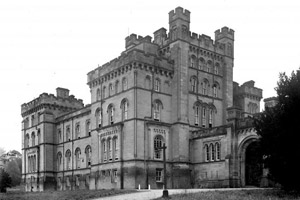WordPress database error: [Got error 28 from storage engine]
SELECT t.*, tt.*, tr.object_id FROM wp_terms AS t INNER JOIN wp_term_taxonomy AS tt ON tt.term_id = t.term_id INNER JOIN wp_term_relationships AS tr ON tr.term_taxonomy_id = tt.term_taxonomy_id WHERE tt.taxonomy IN ('category', 'post_tag', 'post_format') AND tr.object_id IN (19718) ORDER BY t.name ASC
Clan Lennox History
The Lennox clan has a great significance in Scotland’s early history. The Earldom of Lennox covered a vast area around Dunbartonshire as well as parts of Renfrewshire, Stirlingshire and Perthshire. The name derives from the ancient Celtic Mormaers of Levenax from which came the Earls of Lennox.
Several theories exist as to the actual origins of the clan however the powerful Earls had established a strong power base by the end of the 13th century; the fifth Earl being a prominent supporter of Bruce’s claim to the throne. Despite leading an army to besiege Carlisle in 1296 the fifth Earl signed the Ragman’s Roll, swearing loyalty to Edward I of England. However like so many of his noble contemporaries he soon changed his support to the cause of Scotland’s independence.
When no male heir was available, in 1373 the earldom was conferred on Walter de Fasselane through the previous earls only daughter, Margaret. The later resigned the title to their son Duncan. Duncan’s daughter married the Duke of Albany who was Regent of Scotland from 1419 – 1425. His spell as regent being cut short when an Enraged James I returned from his incarceration in England and set about taking his revenge on Albany for the murder of his brother. The Earl was beheaded in 1425 along with the Duke, his daughter was thrown into prison along with her son who was also later executed.
This unfortunate association with Albany essentially broke up the great power of the Lennoxes. Although The dead Earls daughter was eventually released the huge Lennox lands were divided, descendants from her sisters both claiming parts of the estate; from one half descended the Menteiths of Rusky, and from the other, the Stewarts, later Lords Darnley. John, Lord Darnley assumed the title of Earl of Lennox in 1488.
His descendant Matthew helped to grow the Earldom’s power again with the sheriffdom of Dunbartonshire in 1503, however he was among the Scottish nobles killed at the Battle of Flodden in 1513.
It was the youngest son of the fourth Stewart Earl who has probably become best known. Henry, Lord Darnley was married to Mary Queen of Scots. His murder set in motion a troublesome period in Scotland’s history that ultimately cost Mary her head.
When her son James became James VI of Scotland and James I of England he inherited the Earldom. These he passed to his uncle on his father’s side. When he provided no heir the King passed the title to Esmé Stuart, son of John, Lord de Aubigny, Governor of Avignon. In 1581 he was created Duke of Lennox and High Chamberlain of Scotland.
A generation later the title was again without an heir so it passed back to the throne again, this time to Charles II. The Dukedom of Lennox, along with Richmond was passed to Charles Lennox, the King’s illegitimate son. Since then the line has remained unbroken. In the nineteenth century, the Lennoxes of Woodhead claimed the right to take over the title and honors of the ancient Earls of Lennox. Their claim was never established but nevertheless they were recognised as chief family of the name.
Clan Lennox Posts







